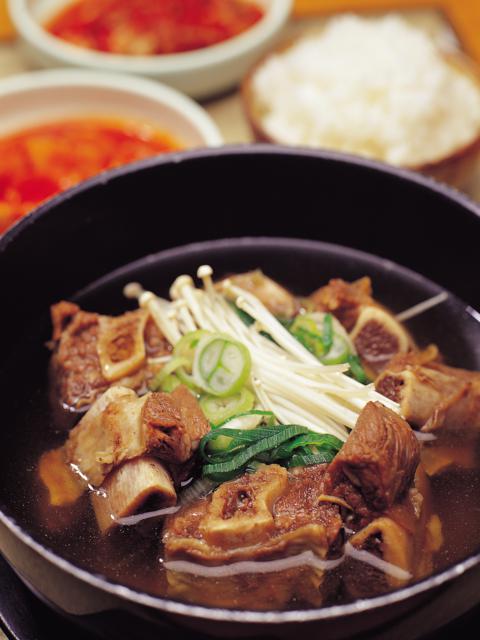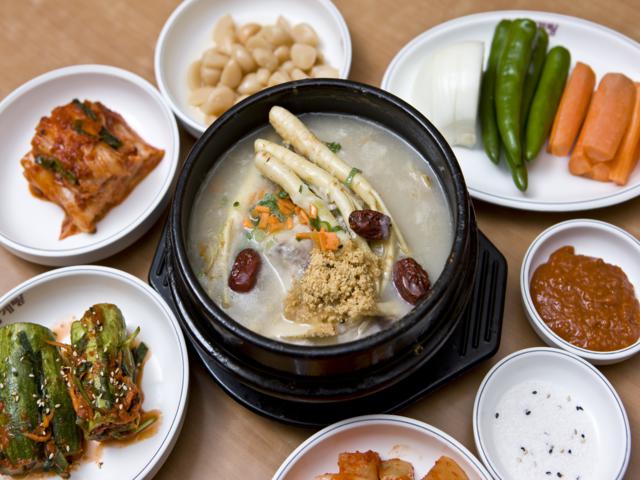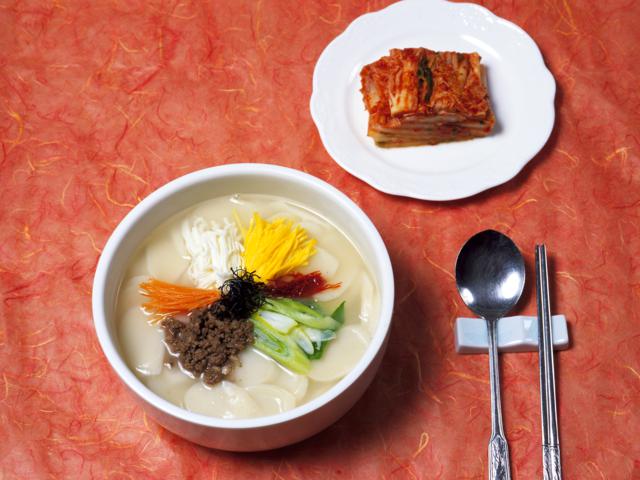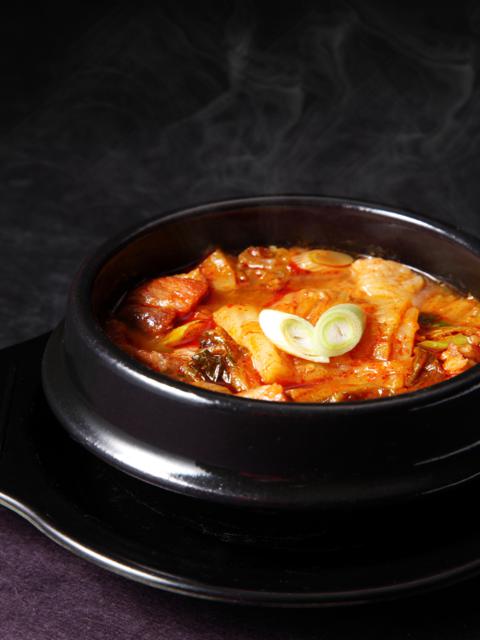Article: Que Lan. Photo: Provided by the Korea Tourism Organization in Vietnam
Galbitang (Canh s)beef flank)
With the main ingredient being beef ribs that have been stewed until tender, the soup has a delicious aroma and a characteristic fatty taste from the meat and fat of the ribs and the broth. To prepare the dish, the chef will cut the ribs into pieces about 5cm long, soak them in cold water for a few hours, boil them, then add ginger and garlic and simmer for another 2.5 hours and then remove them. The broth will be kept and simmered for 30 minutes with vegetables, onions, garlic, to retain the water before adding spices, soy sauce, and beef powder for a richer flavor. Finally, add jujubes and ginseng and boil them, then add some vermicelli and simmer them with the ribs and chopped green onions.

The highlight of the dish is the rich, fatty broth of the ribs, the fresh crunch of the vegetables, as if blended with the slight bitterness of ginseng and the sweetness of jujube. Combined with the spicy taste of onions and chili as accents, the beef rib soup will have the best flavor when served in a heat-retaining stone bowl. Enjoying a bowl of delicious and nutritious Galbitang soup with friends and relatives in the cold of early spring will be a particularly interesting experience.
Samgyetang (Ginseng Chicken Soup)

Ginseng chicken soup is one of the most famous Korean dishes that is loved by people in the summer. However, try to be a little different by enjoying a bowl of hot chicken soup in the cool weather of spring and experience the miraculous energy-boosting effect on the body. The tender chicken meat, imbued with the sweetness of the broth made from glutinous rice, ginseng, jujubes, and chestnuts, will create a fragrant aroma, transmitting warmth to your stomach immediately. To enhance the flavor, the chef also adds a little green onion, salt, and black pepper powder to the broth. The bowl of ginseng chicken soup is served hot, the just-cooked glutinous rice mixed with the sweetness of ginseng and the aroma of jujubes will urge you to taste it right away to feel more abundant health in the new year.
Sagol Tteokguk (Rice Cake Soup)
If Tteok is considered the "soul" of the traditional Korean holiday tray, rice cake soup is believed to help them stay healthy and have good luck in the new year. Rice cake soup is made from diagonally sliced rice cakes cooked with beef broth. The process of making the broth is also very elaborate. The chef will cut the beef shank bone from 5-7cm and soak it in water for 1 day and prepare it carefully, then boil it, wash it again and then simmer it for about 2 days. Next, the rice cakes will be added with beef powder, salt, garlic, a little soy sauce, pepper, seasoned to taste and simmered for 5 minutes until the cakes are soft. The light aroma and natural sweetness of the beef broth blend with the slightly strong taste of garlic and chili, creating a flavor that is both familiar and strange.

The pure white color of the rice cake, accented with a bit of minced beef, a few slices of golden egg, and highlighted with green onions and needles on the milky white background of the broth, will create a symphony of light and pure flavors.
Kimchi Jeongol (Kimchi Soup)
The name of the land of Kimchi is the perfect proof for the unique “fermented vegetables”, which is considered a typical dish of Korean cuisine. With its characteristic strong and spicy aroma, Kimchi Jeongol deserves to be one of the most nutritionally balanced and warming dishes for the body.

When making this soup, kimchi is pickled to make it sour, then stir-fried with pork, spices, beef powder, and garlic to soften. To make the broth, the chef will simmer vegetables, onions, and garlic for 30 minutes, remove the residue, then add spices and beef powder to make it more flavorful. Add ginseng and jujube to cook with the ribs, followed by vermicelli and chopped green onions. Finally, when the ingredients are cooked, the tofu will be cut into diagonal slices, boiled in the broth, and eaten hot.
Kimchi Jeongol chi has a sweet, sour, spicy taste and a strong aroma of kimchi. The soup has the heat and spiciness of chili, the sourness of pickled vegetables, and the aroma of onions, promising to be an easy dish to eat with rice on chilly days.
Doenjang Jeongol (Korean Soybean Paste Soup)
As a rich dish with many nutritious ingredients, soy sauce soup will be a wise choice when you want to enjoy the delicious flavor of stewed soy sauce with vegetables.

To make the broth, the ingredients of radish, onion, garlic, scallion, and anchovy will be put into water and boiled for 1 hour, then the residue will be removed, soy sauce and spices, beef powder, chili powder, fish powder, garlic will be added and boiled with the broth. Next, corn, onion, scallion, green chili, mushrooms, clams, and tofu will be boiled with soy sauce. To enhance the flavor of the dish, the chef often uses jjang sauce, a type of sauce made from fermented beans with salt. After enjoying a barbecue with sochu, it will be the most suitable time to slurp a hot bowl of soy sauce soup with friends and relatives, both sighing and feeling the warmth spreading in the spring weather.
A little secret to ending the party is to have a cup of sweet, light cinnamon tea for dessert to balance the flavor and nutrients for your body.
Reference address:
Biwon Korean Restaurant
- 9th Floor, Keangnam Landmark Tower 72, Hanoi
- Tel: 04. 6282 3300.
Arirang Restaurant
- 3rd Floor, Grand Plaza Hanoi Hotel - 117 Tran Duy Hung, Hanoi
- Tel: 04. 3555 1000 – ext.2030.


































